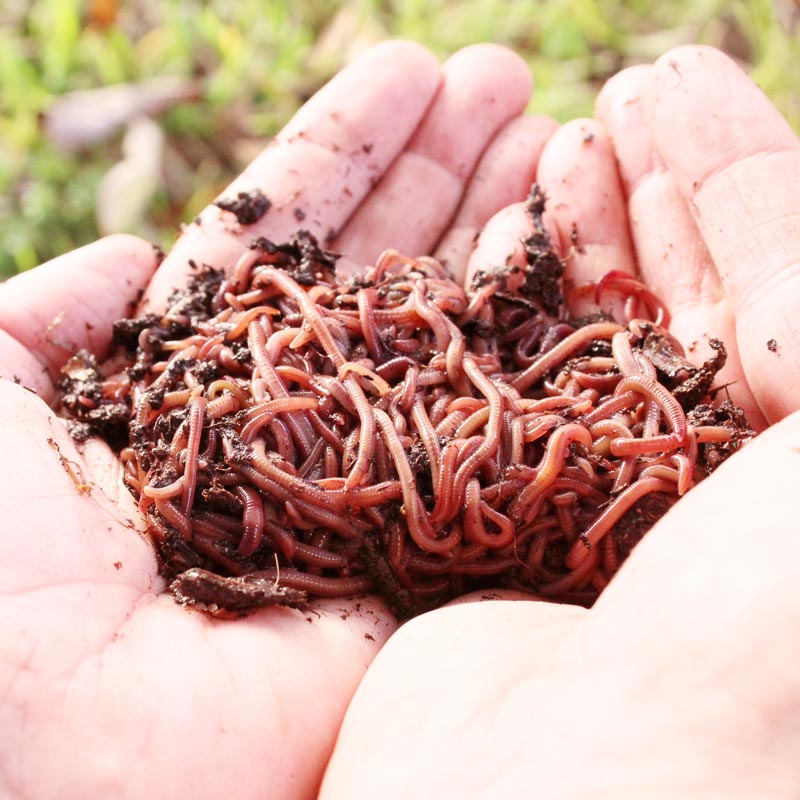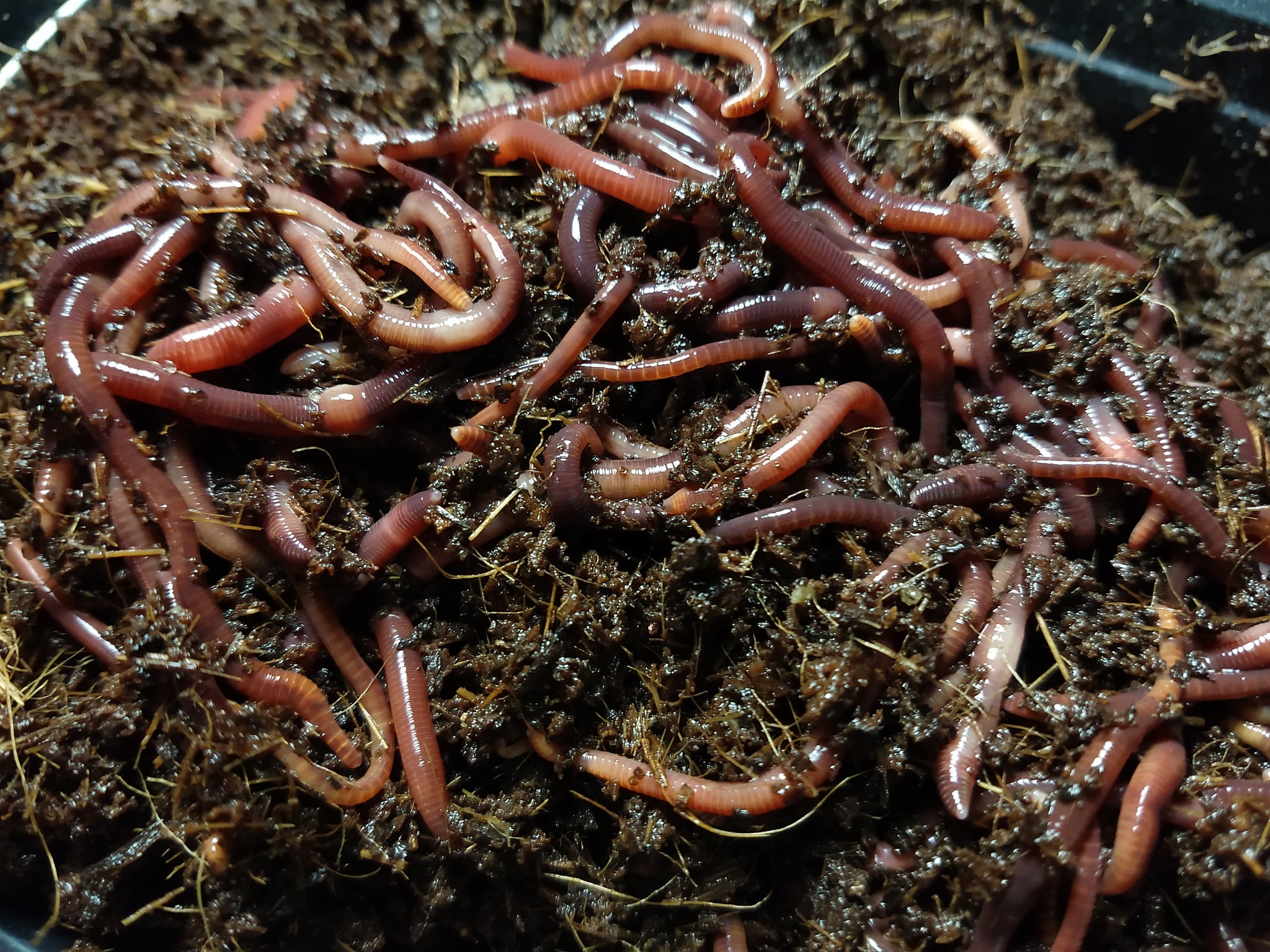The Secret to Lush Lawns Starts with Red Wiggler Express Grass Treatment
The Secret to Lush Lawns Starts with Red Wiggler Express Grass Treatment
Blog Article
Red Wigglers: The Unsung Heroes of Organic Waste Recycling
Red wigglers, or Eisenia fetida, function as crucial agents in the natural waste reusing process, changing discarded products into valuable vermicompost. Their effective breakdown of raw material not just boosts soil top quality but likewise adds to lasting waste monitoring techniques. As the world progressively looks for services to deal with waste build-up and improve farming productivity, understanding the function of these worms comes to be vital. What systems enable them to prosper in compost environments, and how can they be successfully used in both residential and industrial setups? Exploring these questions reveals the more comprehensive effects of vermicomposting in our environmental landscape.
What Are Red Wigglers?
The impressive durability of red wigglers, medically referred to as Eisenia fetida, highlights their critical role in natural waste recycling. These tiny, reddish-brown earthworms are commonly discovered in breaking down natural issue, such as compost heap and manure heaps. Lake Hickory Bait. Unlike other earthworm species, red wigglers thrive in nutrient-rich settings and are highly efficient at breaking down organic materials, making them crucial for vermicomposting

(Red Wiggler Express)Along with their function in waste reduction, red wigglers add to dirt health by improving soil framework and aeration with their burrowing tasks (Lake Hickory Bait). Their visibility in composting systems not only improves decomposition prices yet additionally advertises a sustainable method to throw away management, highlighting their value in environmental conservation efforts
Benefits of Composting With Worms
Composting with worms, particularly red wigglers, offers numerous advantages that improve both waste monitoring and dirt health. These worms successfully damage down organic waste, converting it right into nutrient-rich vermicompost that improves soil. This process increases decay, allowing for a quicker recycling of kitchen area scraps and various other natural products compared to traditional composting methods.
Furthermore, the vermicompost created by red wigglers is bursting with beneficial microorganisms, which aid enhance soil structure, oygenation, and wetness retention. This boosts the general health of plants, advertising energetic development and raised yields in gardens and agricultural setups. The usage of worms in composting decreases the manufacturing of greenhouse gases, such as methane, adding to a much more lasting waste monitoring system.

How to Begin Vermicomposting
Developing a vermicomposting system is an uncomplicated process that can produce significant benefits for both waste management and dirt enrichment. To start, choose an appropriate container, such as a plastic bin or wood box, with appropriate ventilation openings to make certain proper air movement. The measurements ought to ideally be about 2 feet by 3 feet, allowing enough room for the worms to grow.
Next, prepare bed linen product, which can include shredded paper, cardboard, or coconut coir. This bedding needs to be dampened to create an ideal habitat for the worms. When the bedding remains in location, present red wigglers (Eisenia fetida) into the bin, generally around one pound of worms for every single square foot of area.
Adhering to the placement of worms, include organic waste, such as fruit and vegetable scraps, coffee premises, and smashed eggshells. With these steps, you will effectively start a vermicomposting system that contributes to lasting waste administration and improves your soil.
Preserving a Healthy And Balanced Worm Bin
(Lake Hickory Bait)Keeping a worm bin flourishing needs normal focus and like make certain the health and wellness of the red wigglers and the efficiency of the composting procedure. Correct maintenance starts with checking the moisture levels; the bin needs to be damp but not soaked. An excellent general rule is to preserve an uniformity comparable to a wrung-out sponge.
Gently mixing the bed linens and food scraps every couple of weeks stops compaction and ensures that all worms have access to oxygen. Additionally, it is important to feed the worms properly.
Temperature law is an additional essential aspect. Red wigglers prosper in a variety of 55 to 77 levels Fahrenheit. If the bin becomes also hot or cold, the worms may end up being stressed - Lake Hickory Bait. Periodically examine for indications of health, such as worm populace development and the existence of healthy castings. By vigilantly taking care of these elements, one can keep a durable and efficient worm bin.
Effect On Lasting Living
The successful maintenance of a worm bin not just benefits the health of red wigglers however likewise adds considerably to sustainable living practices. By recycling natural waste, such as cooking area scraps and lawn debris, red wigglers assist divert substantial quantities of product from garbage dumps. This decrease in waste not just reduces greenhouse gas emissions however additionally decreases the ecological worry connected with waste management.
Moreover, the spreadings generated by red wigglers act as a nutrient-rich natural fertilizer, improving soil wellness and promoting plant growth. This natural option to chemical plant foods supports lasting agriculture and gardening methods, lowering dependence on synthetic inputs that can damage ecosystems. In addition, worm composting cultivates awareness of waste monitoring, encouraging people and areas to take on more sustainable habits.

Verdict
In summary, red wigglers serve as vital factors to natural waste reusing via their reliable disintegration of natural products. Their capacity to create nutrient-rich vermicompost boosts soil health and wellness and sustains lasting farming techniques. By incorporating vermicomposting into waste administration approaches, individuals and communities can dramatically decrease waste while promoting environmental sustainability. The duty of Eisenia fetida in promoting healthy and balanced communities emphasizes the importance of these organisms in achieving sustainable living and boosting soil fertility.
Report this page